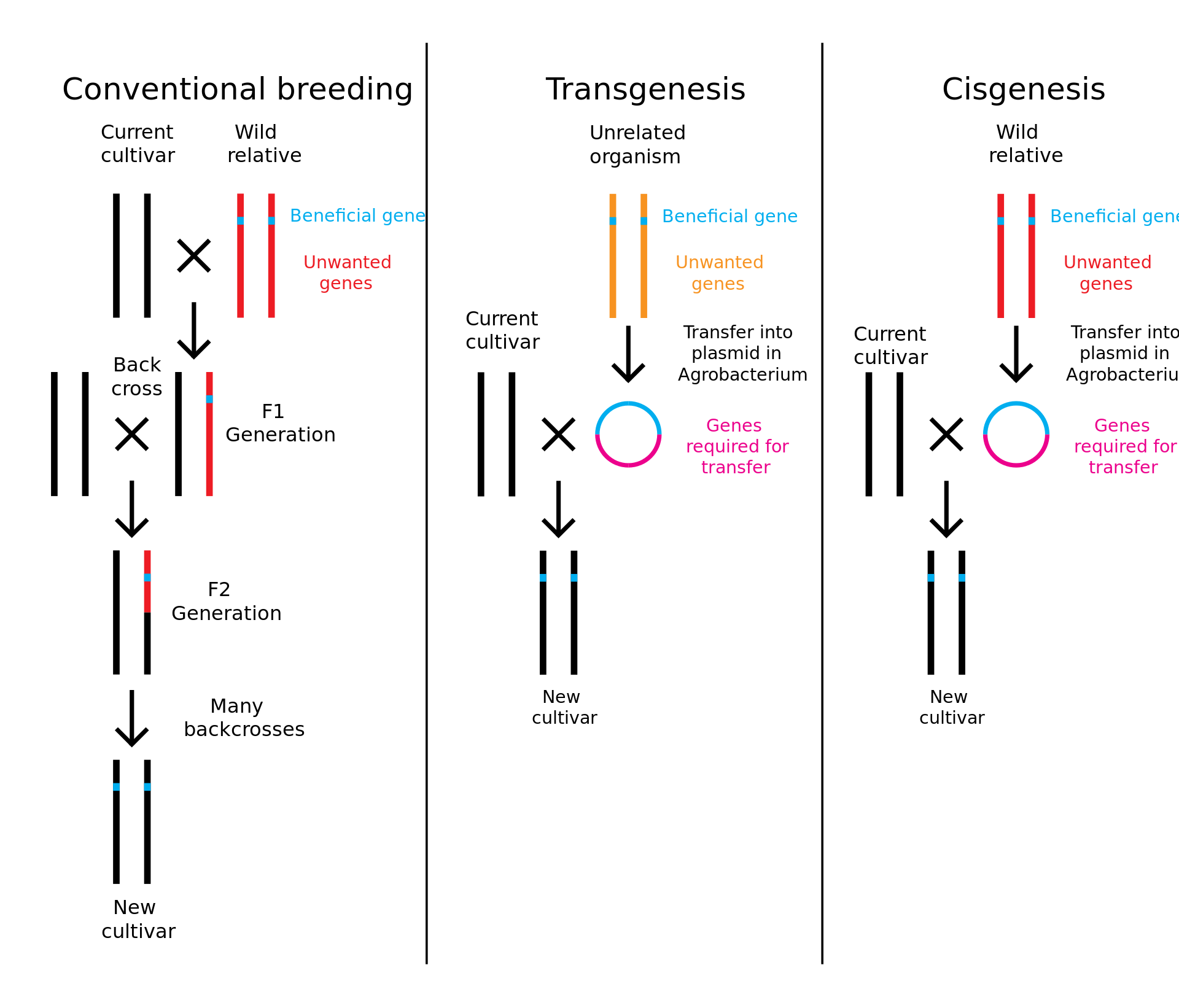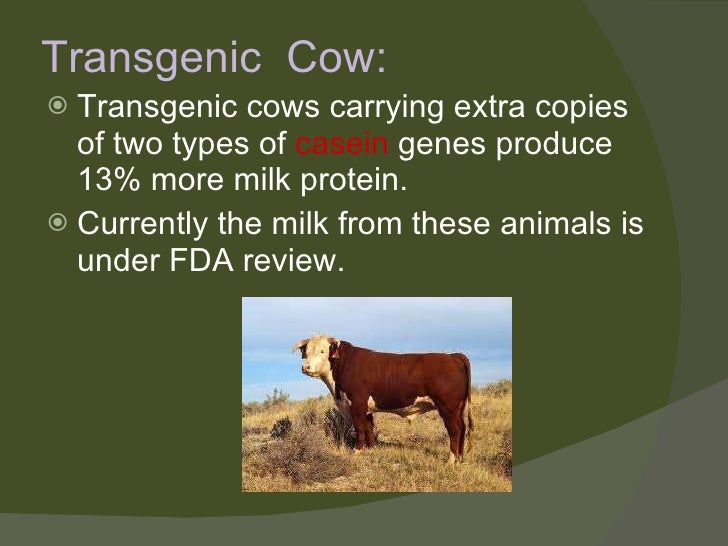A Transgenic Organism Is: | Transgenic means that one or more dna sequences from another species have been introduced by artificial means. What transgenic bacteria can be used to produce? Transgenic organisms are widespread in agriculture. What are transgenic organisms and how are they made? Jan 20, 2020 · transgenic organisms are important research tools, and are often used when exploring a gene's function. Transgenic means that one or more dna sequences from another species have been introduced by artificial means. Animals usually are made transgenic by having a small sequence of foreign dna injected into a fertilized egg or developing embryo. Transgenic organism genetically modified organisms (gmos) are produced by inserting genetic material (sometimes from another species) into a plant such that the new genetic material will provide the plant the ability to exhibit some desirable trait (i.e., genetic engineering). Bacteria acquire transgenes naturally all the time through horizontal gene transfer. Certain genes are inserted into the plant's genome that confer resistance to such pathogens as viruses, fungi, and insects. Most transgenic organisms are generated in the laboratory for research purposes. The transgenic organism is an organism that has altered genes either by the insertion of one or several foreign genes originating from the same species or the genus or by the deletion or inactivation of the selected genes (knockout organisms). Certain genes are inserted into the plant's genome that confer resistance to such pathogens as viruses, fungi, and insects. Are transgenic organisms same as gmo? Bacteria acquire transgenes naturally all the time through horizontal gene transfer. Transgenic means that one or more dna sequences from another species have been introduced by artificial means. Science, technology and the law: Transgenic organism genetically modified organisms (gmos) are produced by inserting genetic material (sometimes from another species) into a plant such that the new genetic material will provide the plant the ability to exhibit some desirable trait (i.e., genetic engineering). Animals usually are made transgenic by having a small sequence of foreign dna injected into a fertilized egg or developing embryo. More images for a transgenic organism is: Jan 20, 2020 · transgenic organisms are important research tools, and are often used when exploring a gene's function. What transgenic bacteria can be used to produce? The first transgenic organisms were bacteria, and transgenic bacteria are widely used today by pharmaceutical companies. The transgenic organism is an organism that has altered genes either by the insertion of one or several foreign genes originating from the same species or the genus or by the deletion or inactivation of the selected genes (knockout organisms). Animals usually are made transgenic by having a small sequence of foreign dna injected into a fertilized egg or developing embryo. Transgenic means that one or more dna sequences from another species have been introduced by artificial means. Transgenic organisms are widespread in agriculture. …an organism's genes) are called transgenic. What are transgenic organisms and how are they made? Animals usually are made transgenic by having a small sequence of foreign dna injected into a fertilized egg or developing embryo. Transgenic organism genetically modified organisms (gmos) are produced by inserting genetic material (sometimes from another species) into a plant such that the new genetic material will provide the plant the ability to exhibit some desirable trait (i.e., genetic engineering). The transgenic organism is an organism that has altered genes either by the insertion of one or several foreign genes originating from the same species or the genus or by the deletion or inactivation of the selected genes (knockout organisms). Science, technology and the law: What are the techniques used to make transgenic organisms? Jan 20, 2020 · transgenic organisms are important research tools, and are often used when exploring a gene's function. Genetically modified organisms (gmos) are more accurately called transgenic organisms where trans means on or from "the other." a transgene is a gene that comes from outside the genome. Transgenesis is also related to the medical practice of gene therapy, in which dna is transferred into a patient's cells to treat disease. Bacteria acquire transgenes naturally all the time through horizontal gene transfer. What transgenic bacteria can be used to produce? The first transgenic organisms were bacteria, and transgenic bacteria are widely used today by pharmaceutical companies. Are transgenic organisms same as gmo? Bacteria acquire transgenes naturally all the time through horizontal gene transfer. Transgenesis is also related to the medical practice of gene therapy, in which dna is transferred into a patient's cells to treat disease. What transgenic bacteria can be used to produce? Most transgenic organisms are generated in the laboratory for research purposes. Science, technology and the law: Transgenic organism genetically modified organisms (gmos) are produced by inserting genetic material (sometimes from another species) into a plant such that the new genetic material will provide the plant the ability to exhibit some desirable trait (i.e., genetic engineering). Bacteria acquire transgenes naturally all the time through horizontal gene transfer. Certain genes are inserted into the plant's genome that confer resistance to such pathogens as viruses, fungi, and insects. Animals usually are made transgenic by having a small sequence of foreign dna injected into a fertilized egg or developing embryo. The transgenic organism is an organism that has altered genes either by the insertion of one or several foreign genes originating from the same species or the genus or by the deletion or inactivation of the selected genes (knockout organisms). Transgenic organisms are widespread in agriculture. The first transgenic organisms were bacteria, and transgenic bacteria are widely used today by pharmaceutical companies. Transgenic plants can be made by introducing foreign dna into a variety of different tissues. Science, technology and the law: The world's first transgenic animal was the transgenic mouse created by rudolf jaenisch in 1974. More images for a transgenic organism is: Most transgenic organisms are generated in the laboratory for research purposes. Genetically modified organisms (gmos) are more accurately called transgenic organisms where trans means on or from "the other." a transgene is a gene that comes from outside the genome.


A Transgenic Organism Is:: More images for a transgenic organism is:

EmoticonEmoticon